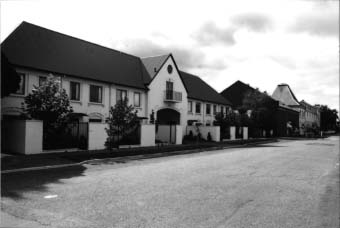| Our Environment: Issue 14 Autumn 1998 |
Delights And Drawbacks Of Inner City Living
People living in newer residential units in the inner city enjoy being close to work, shops and entertainment, and like the modern style of their homes.
However, lack of privacy, the presence of close neighbours and glue sniffers can pose a downside to inner city living, according to a recent Christchurch City Council survey.
Occupiers of 56 apartments in Inner City East - 62 per cent of all apartment blocks built in the inner city area east of Latimer Square since 1990 - were interviewed.

Residents were asked, for example, how they felt about the amount of outside space they had, their access to sunlight and the privacy of their property. Their views on the quality of landscaping, problems of noise nuisance and availability of carparking were explored. The survey also questioned what people liked and disliked about living in the inner city and why they chose to do so.
Most respondents liked living in the inner city because of the proximity to town, convenience to all amenities and the lifestyle. They generally chose their particular unit because it was modern, sunny and warm, close to town and suitable for the price. Aspects residents least liked about their unit were lack of privacy, being too close to neighbours, and glue sniffers and "associated occurrences".
Most occupants were in the 25-34 age group (46 per cent) and 15-24 year age group (21 per cent). Fifty nine per cent were male, 41 per cent were female.
Analysis of household composition showed 38 per cent were non family households eg flatting type situations, 28 per cent were couples without children, 14 per cent were a one person household and 5 per cent each were two parent and one parent families.
Of those who worked, 54 per cent were employed or self-employed within the four avenues, 17 per cent worked elsewhere in Christchurch and 10 per cent worked outside these areas.
Respondents occupations were classified: 29 per cent service and sales workers, 18 per cent professionals, 13 per cent students, 11 per cent associate professionals and technicians.
The results of the survey will be used to assist the Council in planning for the inner city, to understand aspects relating to the design of different developments, as well as City Plan controls directed at the avoidance or mitigation of any adverse environmental effects of activities.
The possibility of a similar survey being conducted for other residents of inner city housing is also being investigated. This may focus on the impacts of a changing environment on occupiers of older housing stock in the same area.
Ken Gimblett
Senior Planner, Planning Policy
Inner City East Survey: Findings
|
| Our Environment Index |